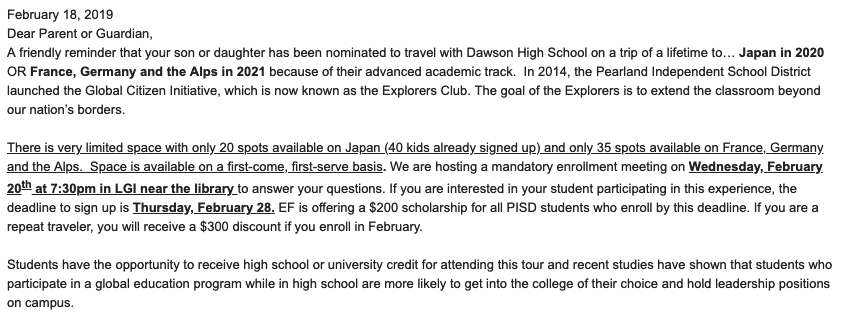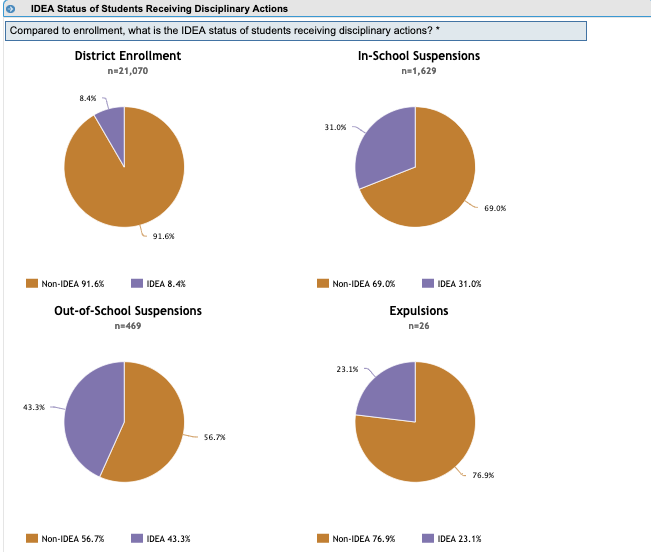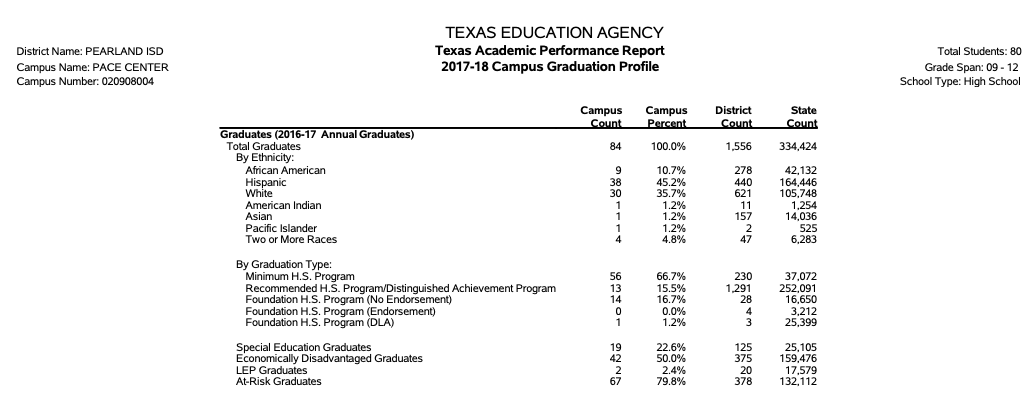Archive Monthly Archives: February 2019
Explorers
After spending summers in Ecuador and Paraguay as a high school and college student, I recognized the tremendous developmental benefits of not just learning but living other cultures, concepts, and contexts. I realized early the lack of humility in most charity (reactive) or philanthropy (strategic) and with inspired guidance from a youth leadership development program moved to examine local resources and empower sustainable, community-driven change.
In medical school, I saw how health disparities mirrored disparities in educational and economic opportunity, and I realized how my privileged participation in a program that took me twice to South America was not available to most students. My first thought was to start a scholarship that would support students who were economically disadvantaged to participate in the experience that was so formative for me. But ultimately, I felt this was a bandaid for an unjust circumstance, and I was looking for a cure.
As the Greater Houston area, including suburbs like Pearland, have changed demographically, the cure has become so obvious to me. It is not to uplift programs that further privilege the privileged (see email in image below) but to take advantage of the rich opportunity to build community across the various perceived divides right where we live - a deeply worthy endeavor that is accessible to all.
Pearland ISD could take meaningful action on cross-cultural exchange within the boundaries of our district - where we could not only share our cuisine, traditional dress, languages, and customs but also the challenges we face as recent immigrants in an indisputably anti-immigrant moment. As we resist celebrating difference only insofar as we are tickled by the novelty, as we get real about deep interest for whole human beings and not just their curious cultural practices, we will invariably discover, with profound compassion, that we are much more the same than we are different.

Students most vulnerable to disciplinary action in PISD
While the data is nowhere to be found or linked on the Pearland ISD website, according to the U.S. Department of Education Office for Civil Rights (from a PISD survey in 2015), black students and (Individuals with Disabilities Act) IDEA students in our district disproportionately receive in-school suspension, out-of-school suspension, and expulsion. While only 16% of district enrollment, black students comprise over 30% of students for whom the district takes these disciplinary actions. The numbers are even more concerning for IDEA students, who represent 8% of district enrollment and 31%, 43%, and 23% of students who are punished. Section 504* student data are not reported by demographic categories.
We have an alternative high school in Pearland ISD called the PACE Center for students with behavioral problems. There, black students are actually underrepresented at 10% of the campus population (relative to 15% of the district), while Latinx students (45% vs. 35%) and special education students (22% vs. 8%) are overrepresented.
We have budgeted for over $2M on security and monitoring services in 2018-2019. With the investment in school safety across the district, are we also taking measures to ensure that *every* student is safe? Perhaps we should be considering a wealth (proven or at least promising) alternative strategies for effective school discipline.
*Section 504 is a civil rights law, while IDEA is an educational benefit law. All IDEA students are covered by Section 504, but the reciprocal is not true. Curiously, PISD reports a smaller number of Section 504 students than IDEA students.


Leading with love
What drives many to a life of service through medicine is a deep compassion for all people. As a physician, I see a whole human being in each patient - with their genetic predispositions, their traumas, their aptitudes, their temperaments, their behavioral risk factors, their social and economic circumstances. As fiduciaries for the health and wellbeing of our patients, if it was not already intuitive, we were trained to see it this way - holistically. It does not surprise me, then, that the Centers for Disease Control and Prevention - with the input of key leaders from the fields of health, public health, education, and school health - have devised a comprehensive Whole School, Whole Community, and Whole Child Model that includes civic engagement (community involvement), family engagement, social and emotional climate, and counseling, psychological and social services.
Yesterday, I discovered at the quarterly Student Health Advisory Council (SHAC) meeting that in Pearland ISD, we focus almost exclusively on physical health and nutrition, ultimately an impoverished view of health. There is opportunity here to address so many unmet needs of our students.
The current Board of Trustees, who has oversight of the SHAC, has had years to implement a more compassionate, comprehensive, and inclusive vision that concentrates not only on academic goals but a district culture that helps us to operationalize our commitment to the education of all of our children. Have they? As parents in the district, you have agency to help create the culture you want to see for the health of your children and our community. Join me in this journey!

